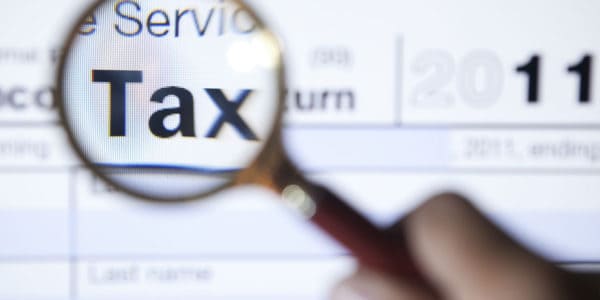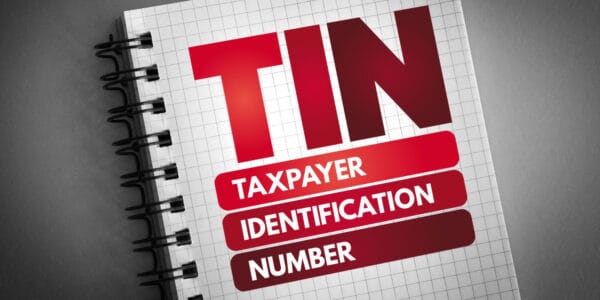A UTR number is a ‘Unique Taxpayer Reference’ assigned by HMRC to a company, a partnership, an organisation, or an individual who registers for Self Assessment.
Often simply called a ‘tax reference’, a UTR number comprises 10 digits. HMRC uses UTRs to identify businesses and certain individuals for tax purposes.
Do I need a UTR number?
A UTR number is required by businesses, organisations, and many individuals in the UK, including:
- Companies limited by shares
- Companies limited by guarantee
- Partnerships, including Limited Limited Partnerships (LLPs)
- Partners in business partnerships, including LLP members
- Sole traders
- Self-employed persons
- Limited company directors who receive income that is not taxed through PAYE
- Limited company shareholders who receive income from shares
- Charities and trusts
- Trustees and executors of estates
- Individuals who receive regular annual income from a settlement or trust
- UK residents with taxable foreign income above £300 a year
- Ministers of Religion
- Landlords and any other persons receiving rental income
- Investors
- Individuals with a gross annual income of £100,000 or more
- Anyone who claims expenses of £2,500 or more
- Persons in receipt of certain capital gains
- Recipients of Child Benefit payments who have an annual income above £50,000
- Workers registered under the Construction Industry Scheme
- Anyone who receives untaxed income, incl. interest, that is not processed through PAYE
How to get a UTR number
HMRC will automatically issue a Unique Taxpayer Reference when you set up a limited company or register for Self Assessment. Your UTR should arrive by post within 14 working days of setting up a company or within 10 working days (21 days for non-UK addresses) of enrolling for Self Assessment, although it can take longer.
It will be sent to your company’s registered office address or the contact address you supply during Self Assessment enrolment. The letter you receive will also provide guidance on what to do next.
Company UTRs
If you register a limited company, either directly with Companies House or through an online company formation agent, HMRC will be notified immediately. Your company’s UTR will then be automatically generated and posted to your registered office, so there is no need to apply for this number separately.
HMRC will use the UTR to identify your limited company for all Corporation Tax obligations. Once you have received the UTR number, you will be able to register your company for Corporation Tax. You can do this online on the HMRC website.
Personal UTRs
If you are a company director, a member of a partnership, or any other individual who is required to register for Self Assessment, you must visit the HMRC website and complete an online registration form (or print the completed form to send by post). You will not be able to file a personal tax return or pay tax via Self Assessment until you do so.
Once you have registered for Self Assessment and received your UTR, you will be able to create a new online account on the HMRC website and sign up for the Self Assessment service.
Within 7 days of doing so, HMRC will send you an activation code by post. When you receive this code, you will be able to sign in to your online account, file Self Assessment tax returns, and pay any tax that you owe.
Where to find your UTR number
You can find the Unique Taxpayer Reference for your limited company or for Self Assessment in a number of places, including:
- Your company’s online Corporation Tax account
- Your online Self Assessment account
- The “Welcome to Self Assessment” letter received from HMRC
- The “Corporation Tax Information for New Companies” letter received from HMRC
- The letter containing your Self Assessment activation code
- Notices to file a Corporation Tax return or Self Assessment tax return
- Statements of account
- Payment reminders
- Previous Corporation Tax or Self Assessment returns
- Any other official letters or notices received from HMRC
Your 10-digit UTR number may not be listed as ‘UTR’ or ‘Unique Taxpayer Reference’ – it will more likely be referred to as ‘Reference’ ‘Tax Reference’ or ‘Corporation Tax Reference’. On official HMRC correspondence, it should be located near the top of the page, on the right-hand side.
If you cannot sign in to your HMRC online account or find any documents containing your Unique Taxpayer Reference, you can contact HMRC to request your UTR number. Limited companies can do this online, and Self Assessment individuals can contact HMRC by phone.
Corporation Tax Calculator
Do I need more than one UTR number?
You cannot get more than one UTR number for a limited company, nor can you get more than one personal UTR for Self Assessment.
If you have set up a limited company and also need to register yourself for Self Assessment (as a director or shareholder), you will have two different UTRs:
- one for your company, for Corporation Tax purposes
- one for yourself, to declare and pay personal tax through Self Assessment
LLPs also need to register separately from each individual LLP member – the business will have its own UTR, and each LLP member will have a personal UTR of their own.
Is a UTR the same as a Company Registration Number (CRN)?
A UTR issued by HMRC is not the same as a Company Registration Number (CRN) issued by Companies House. They are different numbers that serve completely different purposes, so do not confuse the two!
- A Unique Taxpayer Reference is issued and used by HMRC to identify a particular company, organisation, or individual for tax purposes only. It consists of 10 digits.
- A Company Registration Number is immediately created and assigned by Companies House when a new limited company or LLP is incorporated. It is a unique 8-digit number or 6 numbers prefixed by 2 letters.
If you have set up a limited company or LLP, you can find your CRN on your Certificate of Incorporation or by viewing your registered company details on Companies House Service.
Is a UTR the same as a Vat Registration Number (VRN)?
UTRs and VAT Registration Numbers (VRNs) are not the same. A VRN contains 9 digits. It will be included on your VAT registration certificate, which you should receive from HMRC within approximately 30 working days of registration, though it may take longer.
Your VAT certificate will be sent to your VAT online account if you registered online. If you register by post or with an agent, HMRC will send you a printed certificate by post.
If you need or choose to register your business for VAT, you must do this in addition to registering for Corporation Tax or Self Assessment.
Please note that the information provided in this article is for general informational purposes only and does not constitute legal, tax, or professional advice. While our aim is that the content is accurate and up to date, it should not be relied upon as a substitute for tailored advice from qualified professionals. We strongly recommend that you seek independent legal and tax advice specific to your circumstances before acting on any information contained in this article. We accept no responsibility or liability for any loss or damage that may result from your reliance on the information provided in this article. Use of the information contained in this article is entirely at your own risk.






Join The Discussion
Comments (12)
I have set up a limited company for herbal products we sell, and I also am doing courier work in the interim while we get it up and running. I applied for a UTR as a company director and plan to put the courier income through the company. My application for a UTR number was rejected as I didn’t fill in how much I earned from the company which is zero at this point. I can’t get paid by the courier company until I have a UTR. What can I do?
Thank you for your kind enquiry, Terence.
In general terms, you would need to enter a sum of money being received to be able to apply for a personal UTR, as a personal UTR is used by persons filling out a Self Assessment Tax Return, and should only be necessary when someone is receiving money outside of the PAYE system. As you have stated you are presently doing courier work, you should enter the amount you are receiving/intending to receive when completing your application for a personal UTR number.
We would advise calling HMRC on 0300 200 3310, explain the situation with them and follow their advice. Given the scenario you described there should not be any reason why you have been rejected for a UTR number, and therefore we would suspect it may be because a field wasn’t filled in correctly.
I trust this information is of use to you.
Regards,
Nicholas
Many thanks for your reply and advice.
Best Regards,
Terence
No problem Terence – glad to be of assistance.
Regards,
Nicholas
Hi
My daughter is director at our family business limited company. She has the UTR for being a director. Now, she’s trying to do some kind of private paid photoshooting work ( 1 single photo meeting )for another company. That company’s agent is asking her for an invoice, in order to pay her for the job. Can she make an invoice, based on her self-assesment position & existing UTR as a ltd. director or she has to make another self employed registration & UTR ?
Thank you for your kind enquiry, Adrian.
In general terms, a person can only have one personal Unique Taxpayer Reference number and has one self assessment tax return to complete per year. With regards to the income received from this work, this will need to be logged on the self assessment return. The personal UTR number of your daughter will need to be listed on the invoice. She will not need to make another self-employed registration and create a separate UTR number.
I hope this information is of use to you.
Kind regards,
Nicholas
is it possible to invoice from Spain to a UK Company – holder of a UTR Nr.but no Vat.Nr.for services in Spain and via reverse charge system to claim the Vat.amount we paid in Spain?
Thank you for your kind enquiry, Volker.
Unfortunately we are unable to advise on claiming back VAT in Spain; however, it should be pointed out that a UK limited comapny which does not possess a VAT Registration Number is not able to charge VAT, and therefore given your scenario you would not be charged VAT in the first place, to be able to claim it back.
I hope this information is of assistance.
Kind regards,
Nicholas
Hi, I am already employed and working for a company which sorts out my tax etc. I am now planning on starting my own company on the side of my other job. When I register for self assessment as a company director, do I receive a new UTR number or the one from my other job is used?
Thanks
Thank you for your kind enquiry.
There are two types of Unique Taxpayer Reference number – a ‘personal’ Unique Taxpayer Reference (UTR) number for sole traders, and a ‘company’ UTR number for limited companies. Given the scenario you describe, you should already possess a personal UTR number. However, once you set your limited company up, HMRC will automatically create your UTR number and send this to you by post to your company’s registered office within 2 to 3 weeks of your company being formed.
I trust this information is of use to you.
Kind regards,
Nicholas
i am now self employed again can i use my old UTR number?
Hi Mandy,
Thank you for your question.
UTR numbers are provided to limited companies and not individuals. If you have previously formed a limited company, that limited company would have been provided with a UTR number. If that limited company was dissolved, and you have since formed a new limited company, your new limited company will be provided with a new UTR number, and the ‘old’ UTR number for the dissolved limited company cannot be used for your new company.
If your old limited company was not dissolved and was simply dormant, and you are now using the same limited company to trade, you can use the ‘old’ UTR number provided to that limited company.
I hope this helps.
Kind regards,
John